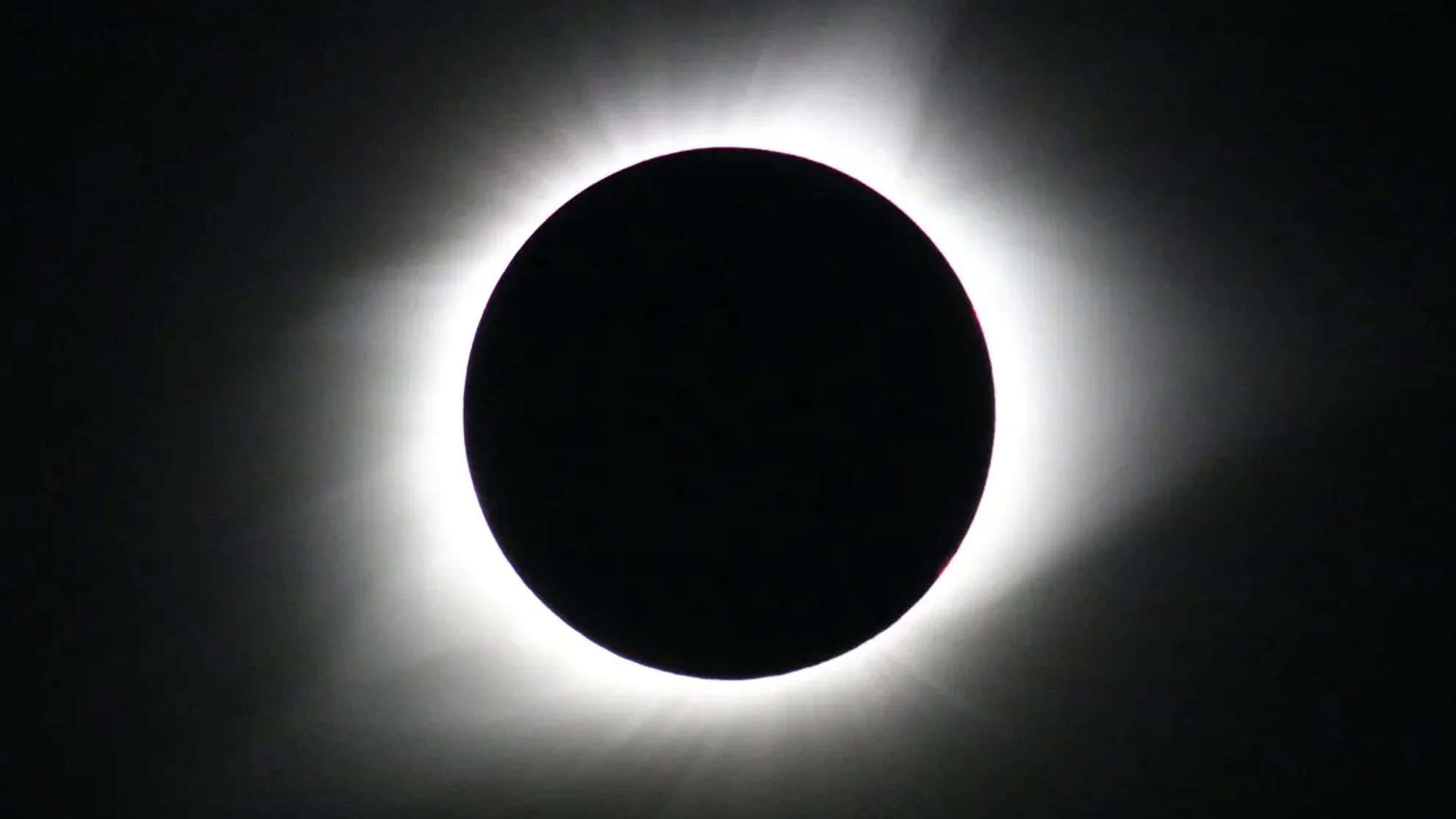
April 8 solar eclipse is the must-see celestial event this spring
Eyes to the sky!
In addition to the bright planets and meteor showers visible throughout the spring season, a 'once-in-a-lifetime' solar eclipse will darken our daytime sky on April 8.
On March 19, at precisely 11:06 p.m. EDT, the Sun will cross the celestial equator from south to north, signifying the earliest start to spring in 128 years.
With that event, astronomical spring begins, and there is plenty to see in both the night and daytime skies for the next three months!
Here's our complete guide to the astronomical events of Spring 2024.
March 19/20 — Earliest vernal equinox since 1896
March 22 — Venus and Saturn close together, predawn
March 24 — Mercury highest in the western sky after sunset
March 24-25 — Full Worm Moon and Penumbral Lunar Eclipse
March 27 — Zodiacal Light after evening twilight for around 2 weeks
April 6 — Mars, Saturn, and Waning Crescent Moon visible predawn
April 8 — Total Solar Eclipse
April 11 — Mars and Saturn close together, predawn
April 14 — Lyrid meteor shower begins
April 19 — eta Aquariid meteor shower begins
April 21-22 — Lyrid meteor shower peaks
April 23-24 — Full Pink Moon
April 30 — Lyrid meteor shower ends
May 5-6 — eta Aquariid meteor shower peaks
May 9-10 — Mercury highest in eastern sky before sunrise
May 22-23 — Full Flower Moon
May 28 — eta Aquariid meteor shower ends
June 4 — Mercury and Jupiter close just before sunrise
June 20 — Solstice
The Planets
To start off the season, two bright planets will be visible in the sky just after sunset.
Mercury can be seen close to the western horizon for an hour or so after the Sun goes down. The planet will climb higher above the horizon each night until it reaches its highest point in the evening of March 24. This is known as Mercury's Greatest Eastern Elongation. After that, it makes its way closer to the horizon again each night until it is lost in the glow from the Sun in early April.
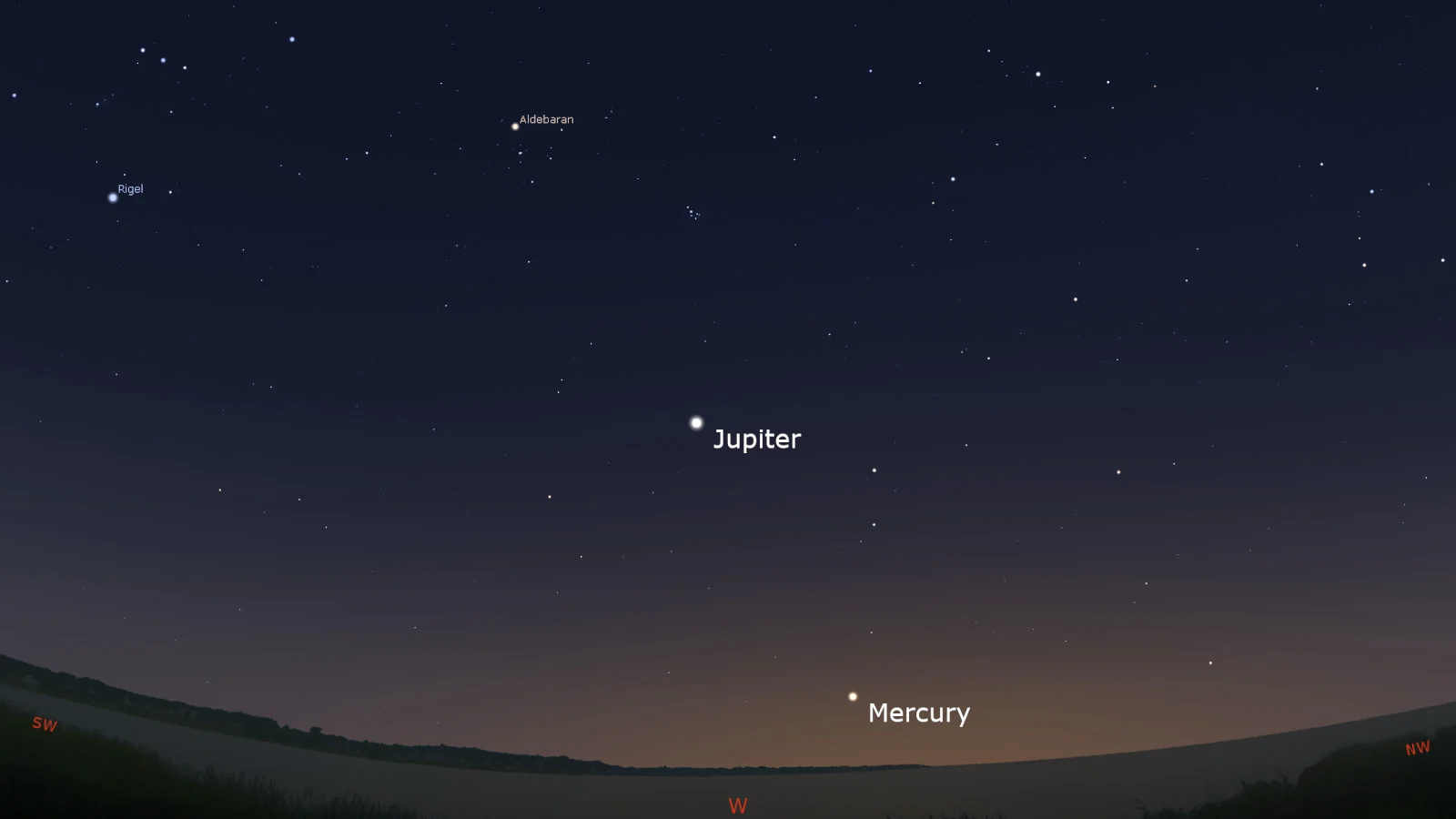
Mercury and Jupiter visible in the western sky after sunset on March 24. Credit: Stellarium/Scott Sutherland
Just up and to the east of Mercury each night will be Jupiter, the largest planet in our solar system. Jupiter will set around 11 p.m. local time to start off the season, and will gradually set earlier, dipping below the horizon around 10 p.m. by April 10, by 9pm around May 1, and then will be lost in the glare of sunset shortly thereafter, for the rest of the season.
If you look very closely at the eastern horizon in the first days of spring, just before the Sun rises, you may spot three planets trying to shine through the light of dawn. Mars is the first to pop up over the horizon each morning, followed by Saturn, and then bright Venus. However, the three become lost in daylight fairly quickly, especially as sunrise gets earlier.
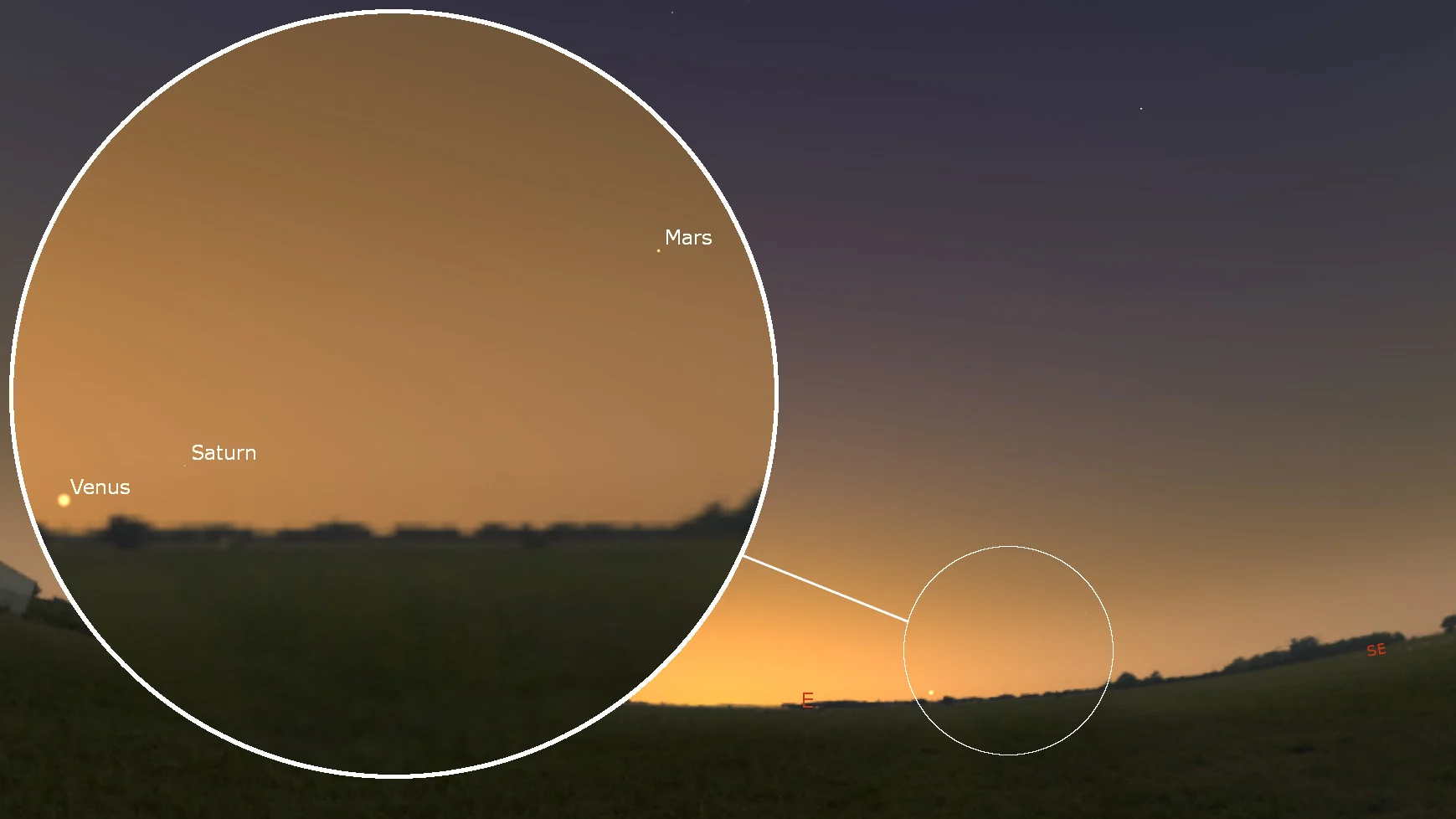
Venus, Saturn and Mars line up in the predawn twilight on March 24, 2024. Credit: Stellarium/Scott Sutherland
Especially watch for Venus and Saturn to be close together near the eastern horizon just before sunrise on March 22.
As the season progresses, Mars and Saturn will rise earlier and earlier, becoming visible for longer before dawn, and they'll swap positions relative to the horizon. Look for Mars, Saturn, and the Waning Crescent Moon in a tight cluster in the predawn sky on April 6. Mars and Saturn will appear very close together before dawn on April 11.
Also, in early May, keen-eyed observers may spot Mercury joining these two planets closer to sunrise.
While Jupiter will be missing from our skies throughout the month of May, it will re-emerge in the predawn sky in early June. The planet will appear very close to Mercury on the morning of June 4.
In addition to seeing planets in the evening and predawn hours throughout the season, those in the Path of Totality of the April 8 total solar eclipse will get a special planetary treat when the Moon completely obscures the Sun.
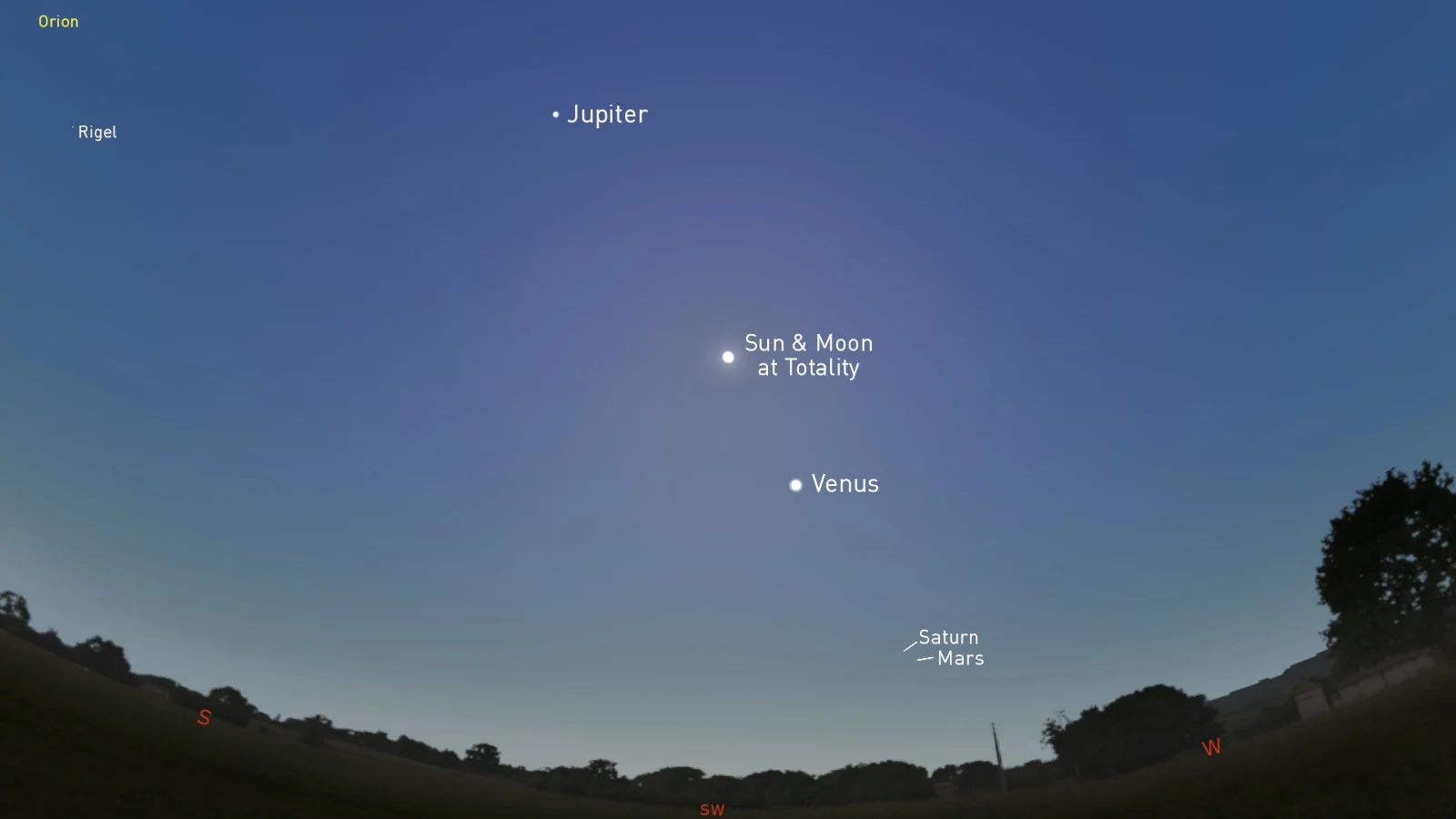
Stars and planets will become visible at totality during the April 8 total solar eclipse. Credit: Stellarium/Scott Sutherland
The sky will be dark enough during totality that several bright stars will become visible, along with Jupiter, Venus, Saturn, and Mars. For more on the eclipse, read on.
Visit our Complete Guide to Spring 2024 for an in-depth look at the Spring Forecast, tips for planning for it and much more!
The Zodiacal Light
For roughly two weeks starting March 27, turn your gaze to the western horizon in the half hour or so just after evening twilight. If you are far away from city light pollution, you may spot a diffuse white glow in the shape of a pyramid, with its base along the horizon and peak extending high into the sky. This elusive phenomenon is known as the Zodiacal Light.
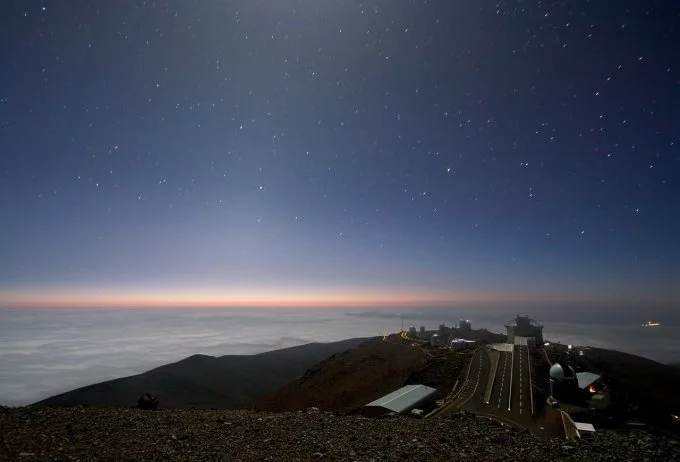
Moonlight and zodiacal light over La Silla. Credit: European Southern Observatory (ESO)
The zodiacal light is produced by sunlight glinting off grains of dust in an immense disk surrounding the Sun. From here on Earth, it appears in the western sky, in the half-hour after evening twilight, in the two weeks just after the February and March Full Moons. In September and October, we can see it in the eastern sky, in the half-hour or so before morning twilight, during the two weeks following the New Moon.
New research has shed fresh light on this phenomenon. It was once thought that the dust cloud that produces the zodiacal light originated from comet tails. However, researchers used data from NASA's Juno spacecraft to reveal it may actually be Martian dust floating in space!
Full Moons
We will see the usual three Full Moons during spring of 2024.
The Full Worm Moon occurs on the night of March 24-25, the Full Pink Moon on April 23-24, and the Full Flower Moon on May 22-23.
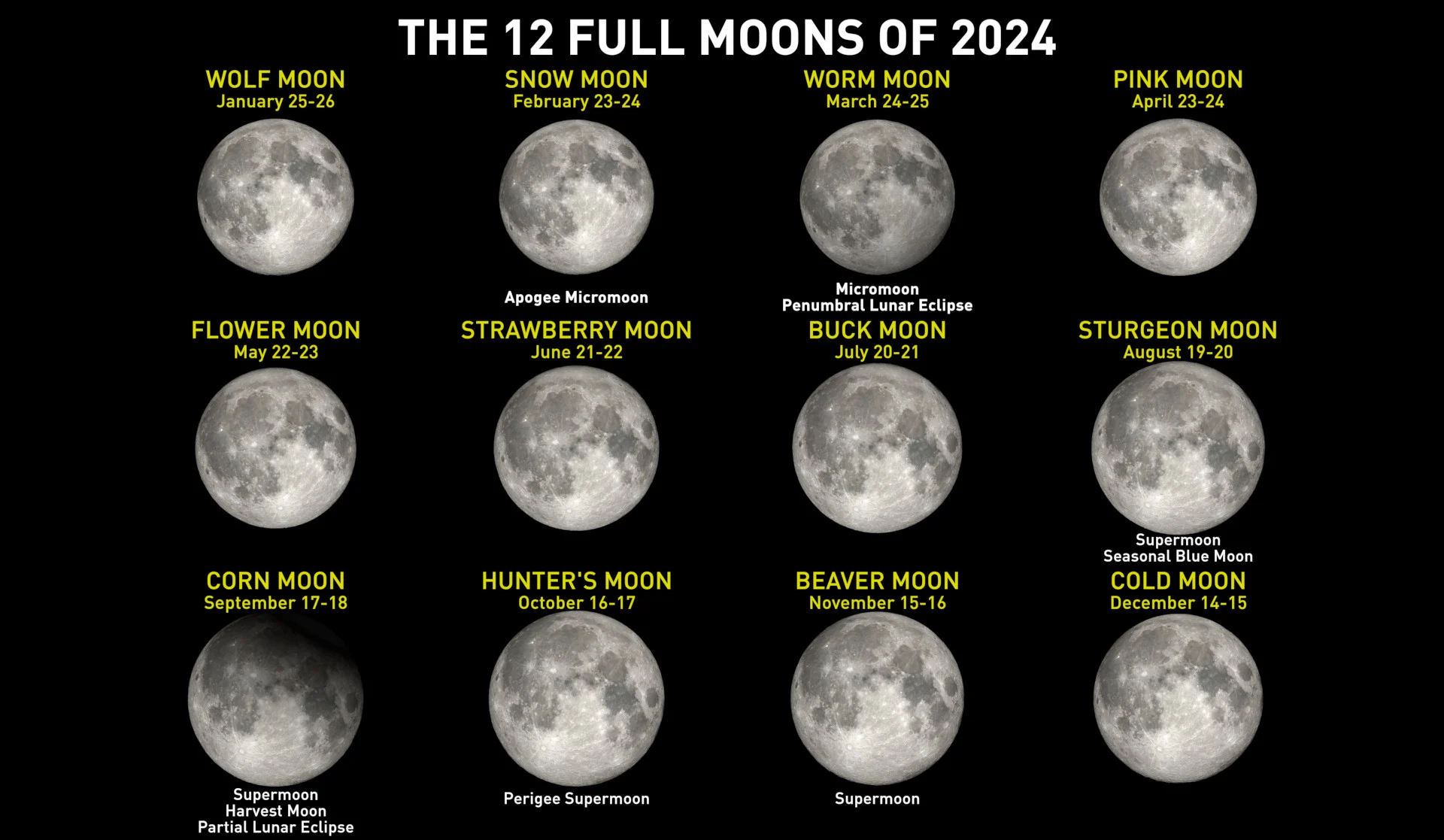
The 12 Full Moons of 2024, including their dates, popular names, their distance (micromoon or supermoon), and whether they produce a lunar eclipse. Credit: Scott Sutherland/NASA's Scientific Visualization Studio/Fred Espenak
Additionally, the Moon will team up with Earth and the Sun to produce two eclipses this spring.
March 24-25 Penumbral Lunar Eclipse
Overnight on March 24-25, the Full Moon will slip through the diffuse outer part of Earth's shadow. This will result in a Penumbral Lunar Eclipse.
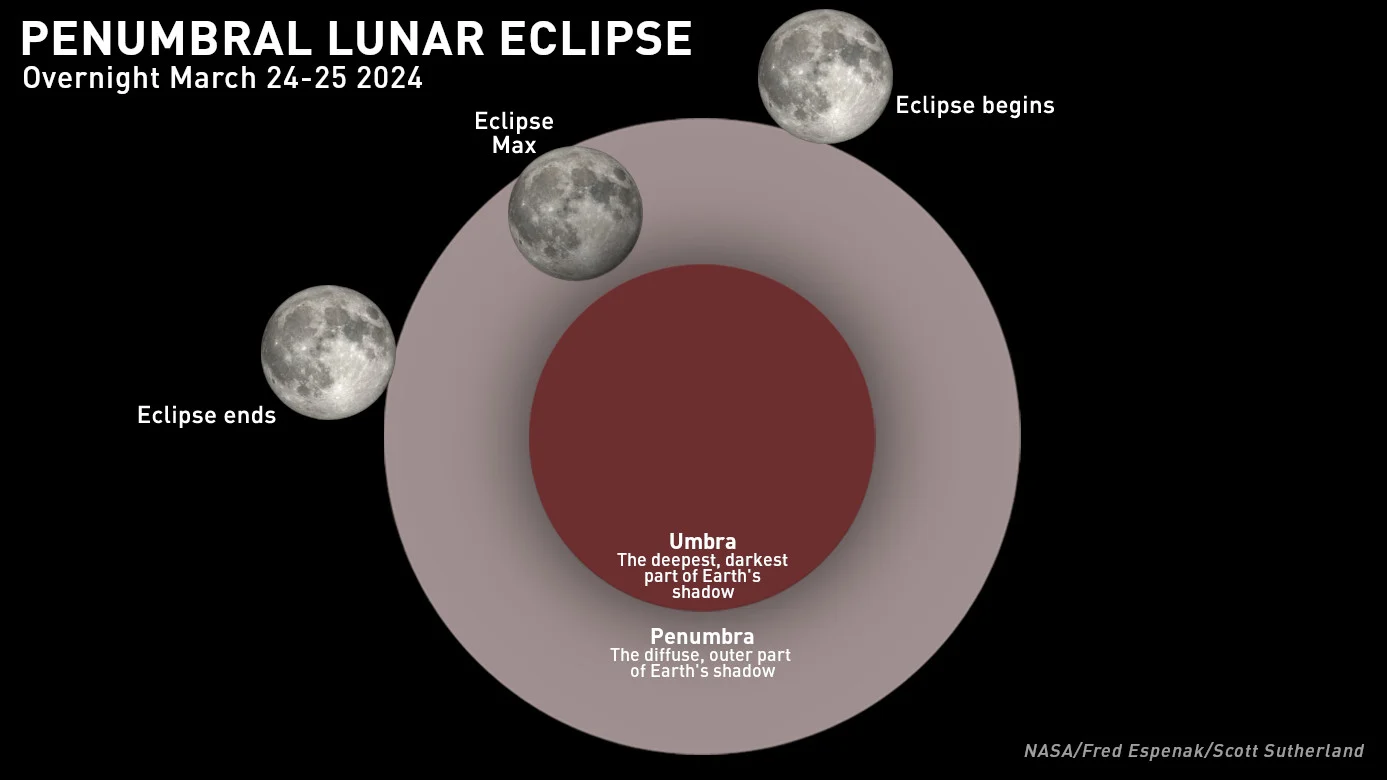
The Moon's path through Earth's shadow on the night of March 24, during the penumbral lunar eclipse. Credit: Scott Sutherland/NASA's Scientific Visualization Studio/Fred Espenak
During a partial or total lunar eclipse, the Moon's passage through Earth's shadow turns it, in part or in whole, a dusky red colour. By comparison, a penumbral lunar eclipse only dims the Moon's light by a small amount. This makes spotting a penumbral eclipse more challenging. Observers may notice slightly more dimming towards the Moon's south pole during the event.
According to NASA, the lunar eclipse begins around 12:53 a.m. EDT on the 25th, it peaks around 3:13 a.m. EDT, with over 95 per cent of the Moon immersed in the penumbra at that time, and then it ends around 5:32 a.m. EDT.
April 8 Total Solar Eclipse
On Monday, April 8, the Sun, Moon, and Earth will line up perfectly to cast the shadow of the Moon across the planet, producing a total solar eclipse visible along a narrow path that extends from southwest to northeast across North America.
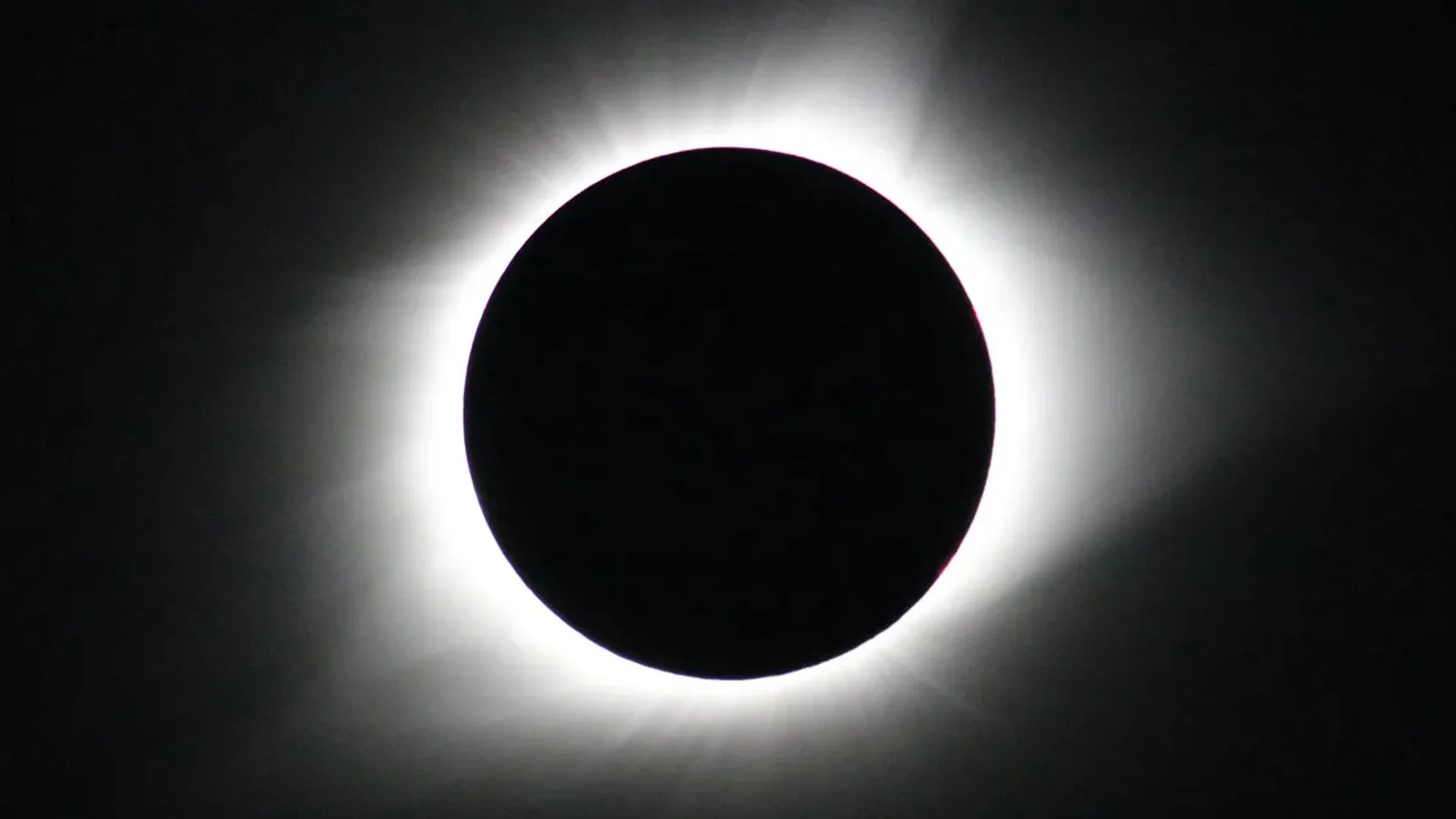
A view of the August 21, 2017 total solar eclipse at totality. Credit: NASA/Nat Gopalswamy
All of Canada has a chance to see at least a partial eclipse during this event. However, this is the first time since February 26, 1979 that the total solar eclipse will be directly visible from the southern part of Canada.
The path of totality — where observers can see the Moon completely block the Sun for a short time — passes through the eastern half of Canada, from southwestern Ontario to the island of Newfoundland. It tracks across the Niagara Peninsula, eastern Ontario, southern Quebec, central New Brunswick, the western half of Prince Edward Island, and across the Gulf of St. Lawrence along the way.

The exact start time, end time, and duration for the eclipse, as well as how much of the Sun will be covered by the Moon at maximum, depends on exactly where you are located during the event.
The first in Canada to see the eclipse begin will be those watching from southern British Columbia, where the Moon will start crossing the face of the Sun around 10:40 a.m. PDT. There, the partial eclipse will only reach a maximum of roughly 30 per cent at around 11:28 a.m., and the eclipse will end at 12:18 p.m. PDT. The farther east an observer is, the later the eclipse begins and ends, and the greater the 'magnitude' of the eclipse will be (how much of the Sun is covered by the Moon at maximum).
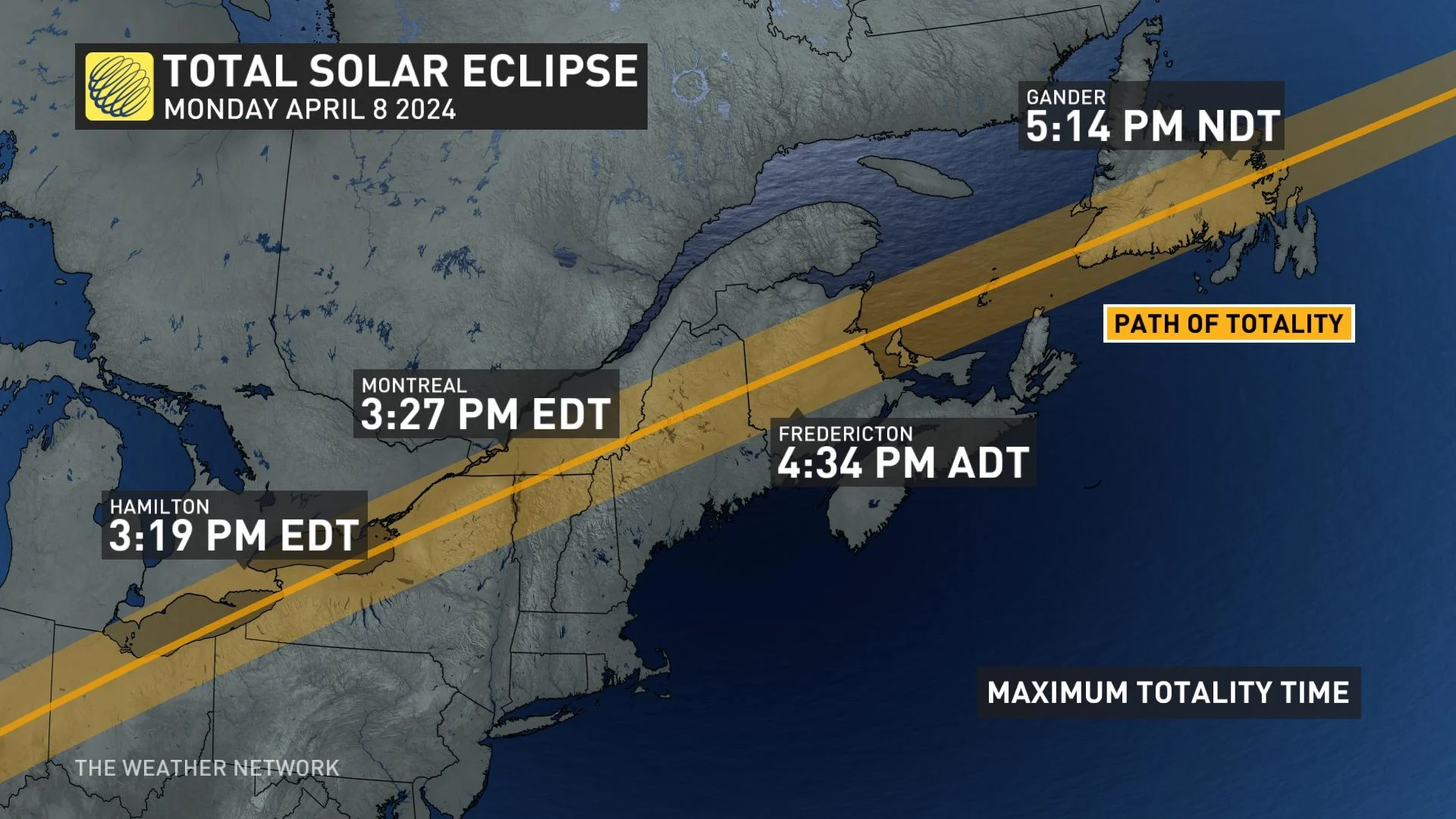
For those located in the path of totality, the earliest start time will be 1:58 p.m. EDT for viewers along the shores of Lake Erie near Leamington, ON. From there, totality begins at 3:13 p.m. EDT and lasts for 2 minutes and 7 seconds. The partial eclipse will then end at 4:28 p.m. EDT. That will be the longest duration from start to finish for all of Canada, at 2 hours and 30 minutes.
However, the longest duration for totality will be in the southeastern part of the Niagara Peninsula, where the Moon will completely block the Sun for up to 3 minutes and 46 seconds!
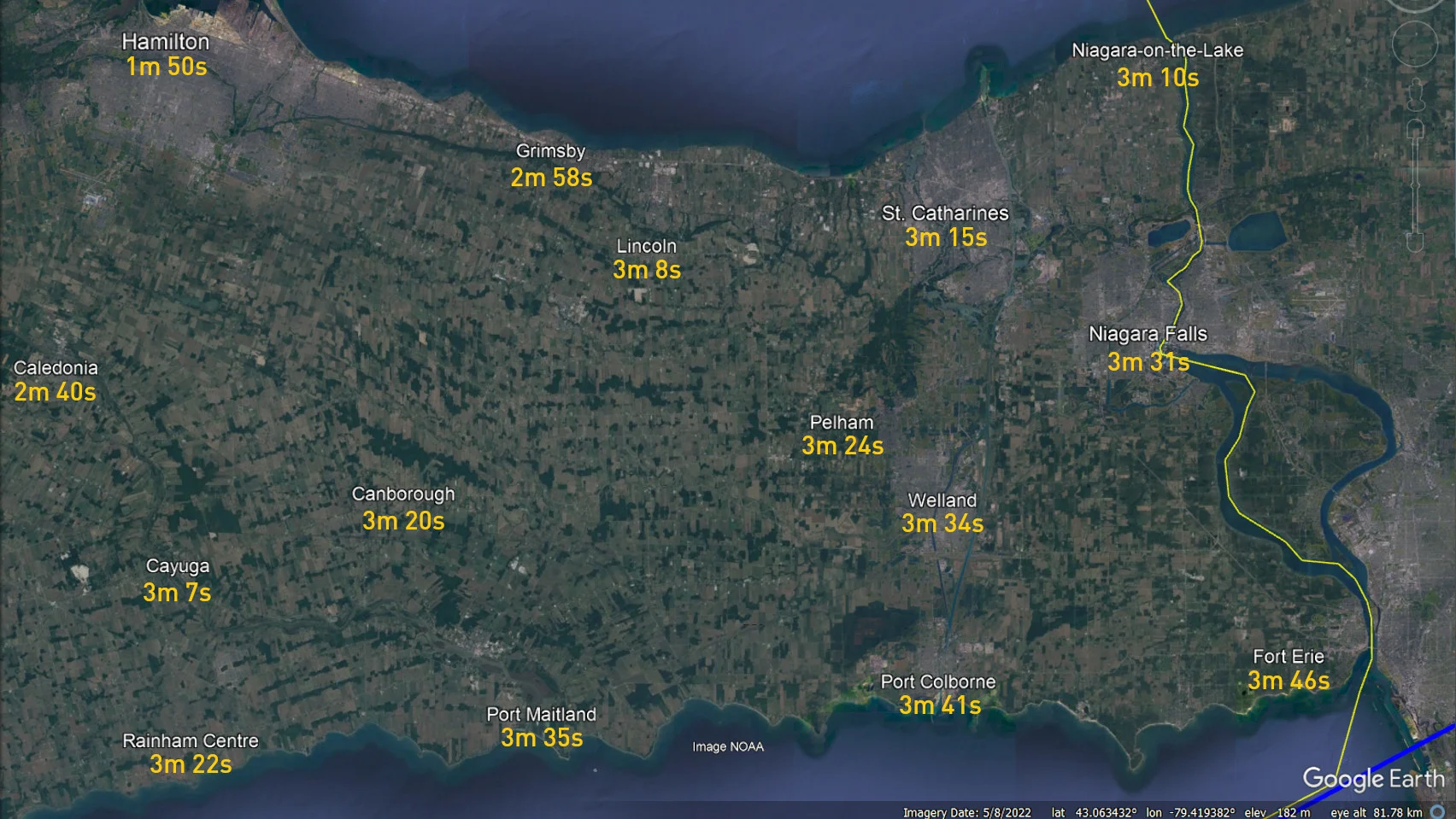
At the end of the path of totality in Canada, the eclipse begins at 4:08 p.m. NDT for Bonavista, NFLD, totality starts at 5:13 p.m. and lasts for 2 minutes and 54 seconds, and the partial eclipse ends at 6:17 p.m. NDT.
The table below provides a sampling of start, totality, and end times for locations along the path of totality in Canada.
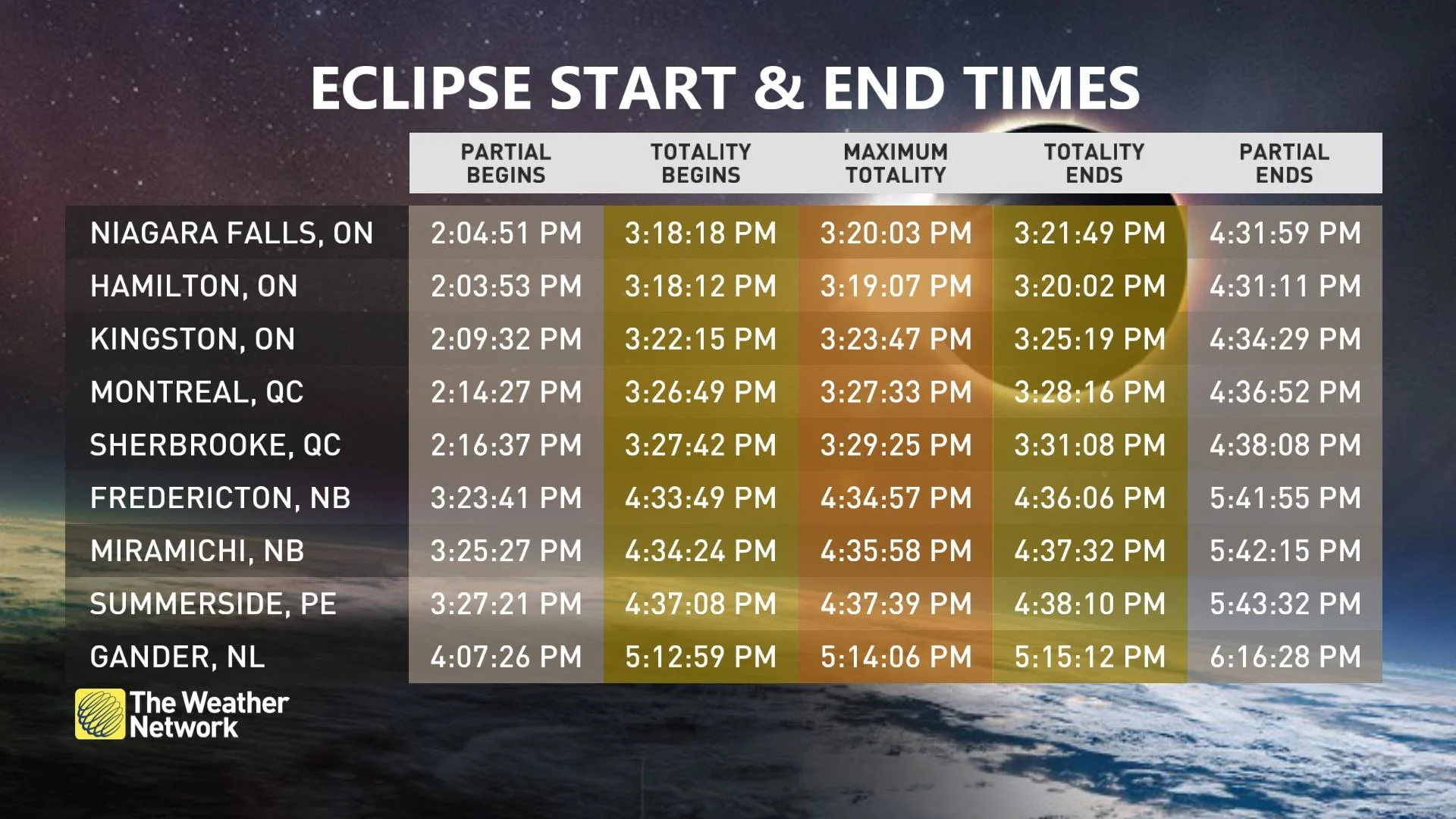
Meteor showers
Each year, after the Quadrantid meteor shower lights up the sky in early January, night sky enthusiasts endure a three-month-long 'meteor shower drought'. While we may catch the occasional sporadic meteor flash by overhead, we have to wait until mid-April before the first major annual meteor shower begins.
Lyrid meteor shower
The Lyrid meteor shower occurs throughout the second half of April. Starting on the 14th, Earth begins its trek across the stream of debris left behind by long period comet C/1861 G1 Thatcher. As we reach the most concentrated part of the stream, this causes the meteor shower to reach its peak around April 21-22, when it produces the greatest number of meteors. We then exit the stream, ending the Lyrids, by April 30.
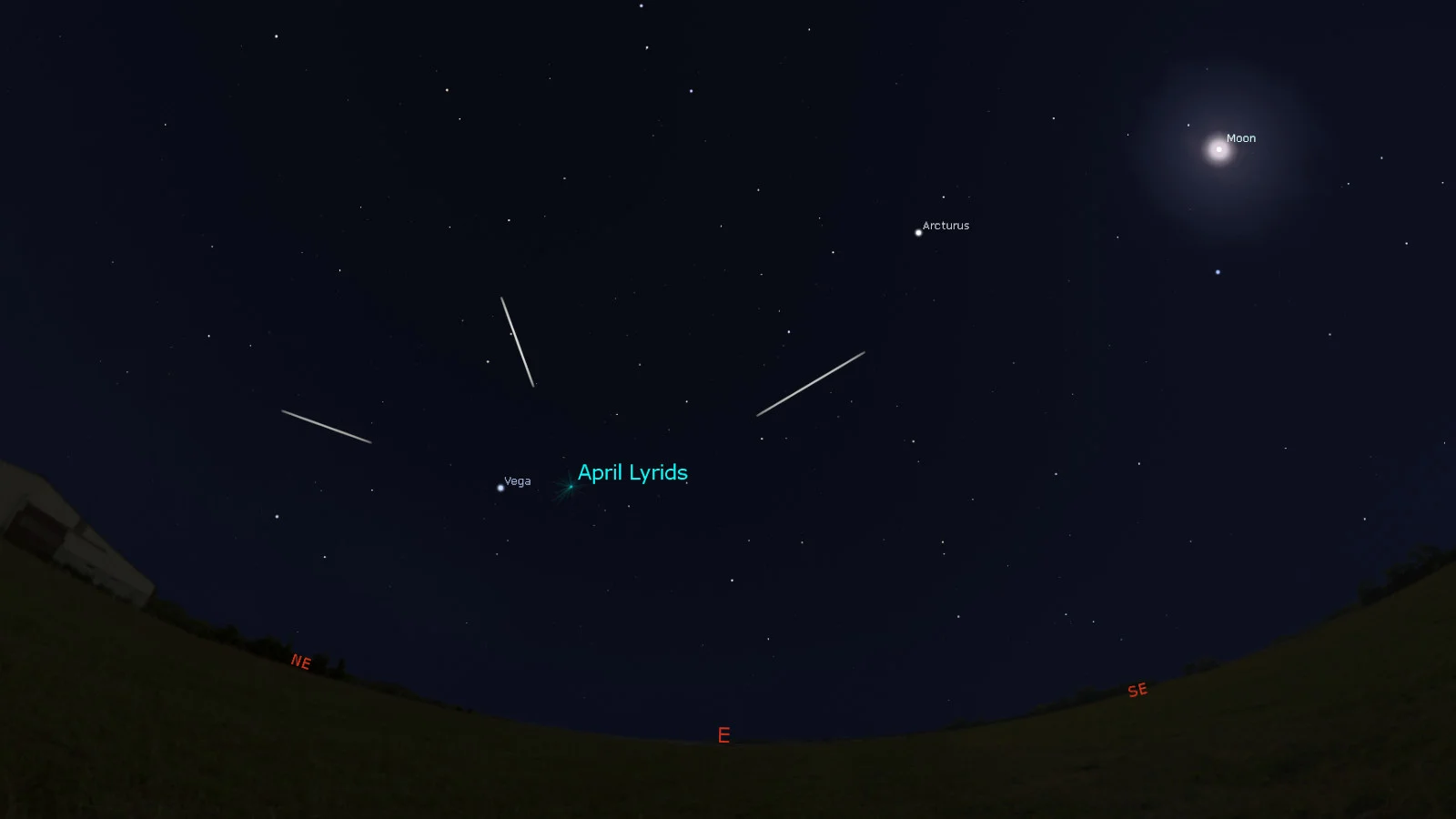
The 'radiant' of the Lyrid meteor shower in the eastern sky on April 21-22, with a Waxing Gibbous Moon lighting up the night. Credit: Stellarium/Scott Sutherland
The timing of the Lyrids and the Full Moon is not ideal this year. With the shower peaking just one night before the Full Moon, bright moonlight will "wash out" dimmer meteors, causing the expected rate — typically 20 per hour during the Lyrids peak — to be significantly reduced.
Fortunately, the meteoroid debris from Comet Thatcher hits the top of Earth's atmosphere at exceptionally fast speeds, around 100,000 km/h. Thus, anything larger than a grain of dust in the stream tends to produce a bright fireball that can easily be spotted, even during a Full Moon.
eta Aquariid meteor shower
Every year, from around April 19 through May 28, Earth makes the first of two passes through the stream of ice and dust left behind by the passage Halley's Comet through the inner solar system.
The meteor shower that results from this is known as the eta Aquariids, as it appears to originate from the constellation Aquarius, and it reaches its peak on the night of May 5-6. The second time Earth passes through Halley's debris is during the Orionid meteor shower in October.
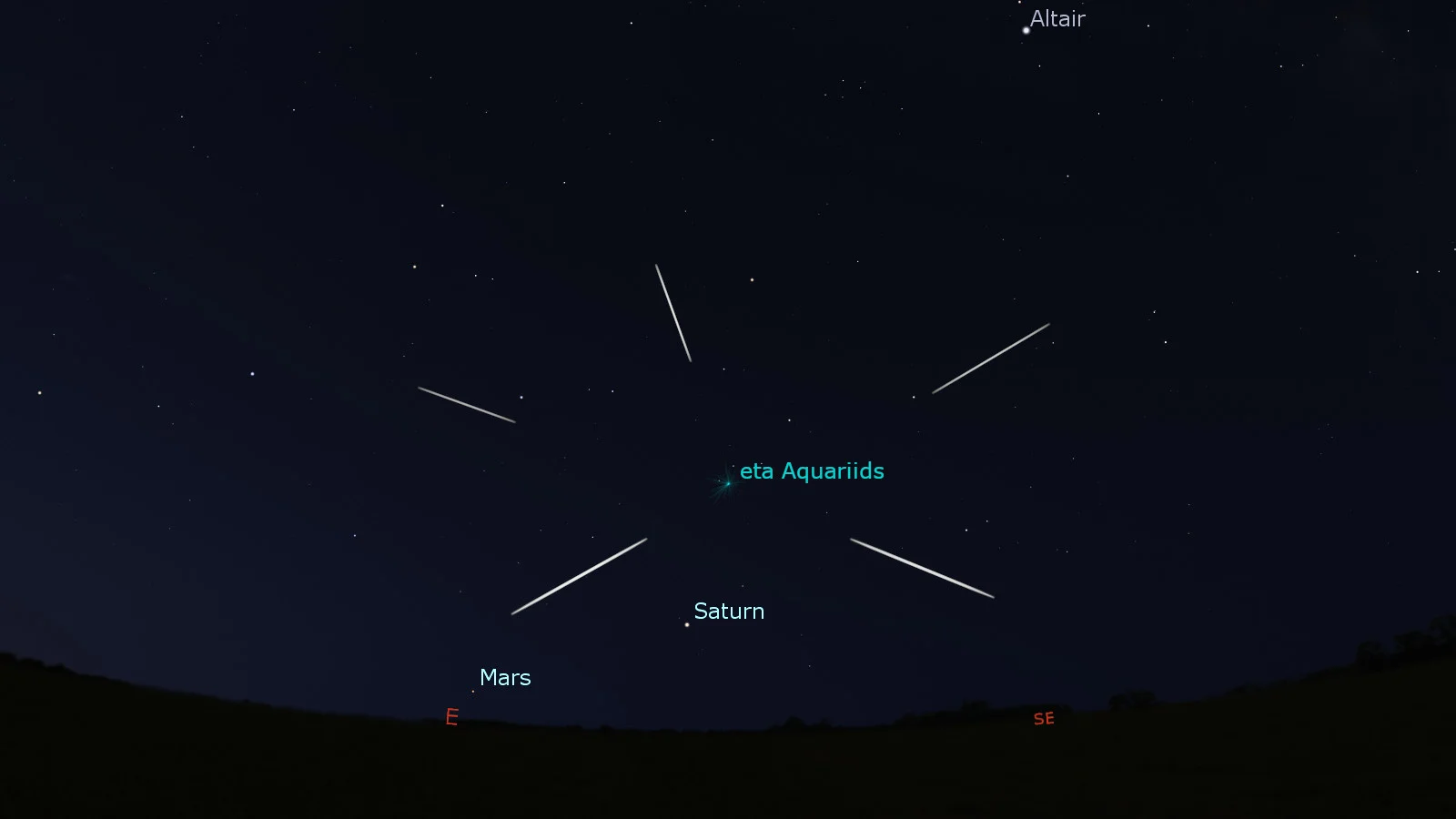
The radiant of the eta Aquariid meteor shower in the predawn hours of May 6. Credit: Stellarium/Scott Sutherland
The best time to see the eta Aquariids is in the hours just before dawn on both May 5 and May 6, since that is when the radiant (the position in the sky where the meteors appear to originate from) rises above the eastern horizon. As this meteor shower's peak occurs a few nights before the New Moon, only a thin Crescent Moon will be in the sky during the event, offering very little competing light.
The eta Aquariids typically produce around 50 meteors per hour under ideal conditions, with most observers seeing about half that number.
As an added bonus, the International Meteor Organization says that a slightly denser stream of debris from Comet Halley may sweep past us a few days before the peak. So, watch in the pre-dawn hours on May 3 for a chance at seeing some enhanced activity.
The eta Aquariids don't tend to produce bright fireballs as the Lyrids do. However, observers have reported a different phenomenon.
As Comet Halley meteoroids streak through the air at 240,000 km/h, we see the typical meteor flashes. However, after some meteors wink out, a glowing trail is left behind in their wake, which can float in the air for minutes or even hours. These are known as persistent trains.
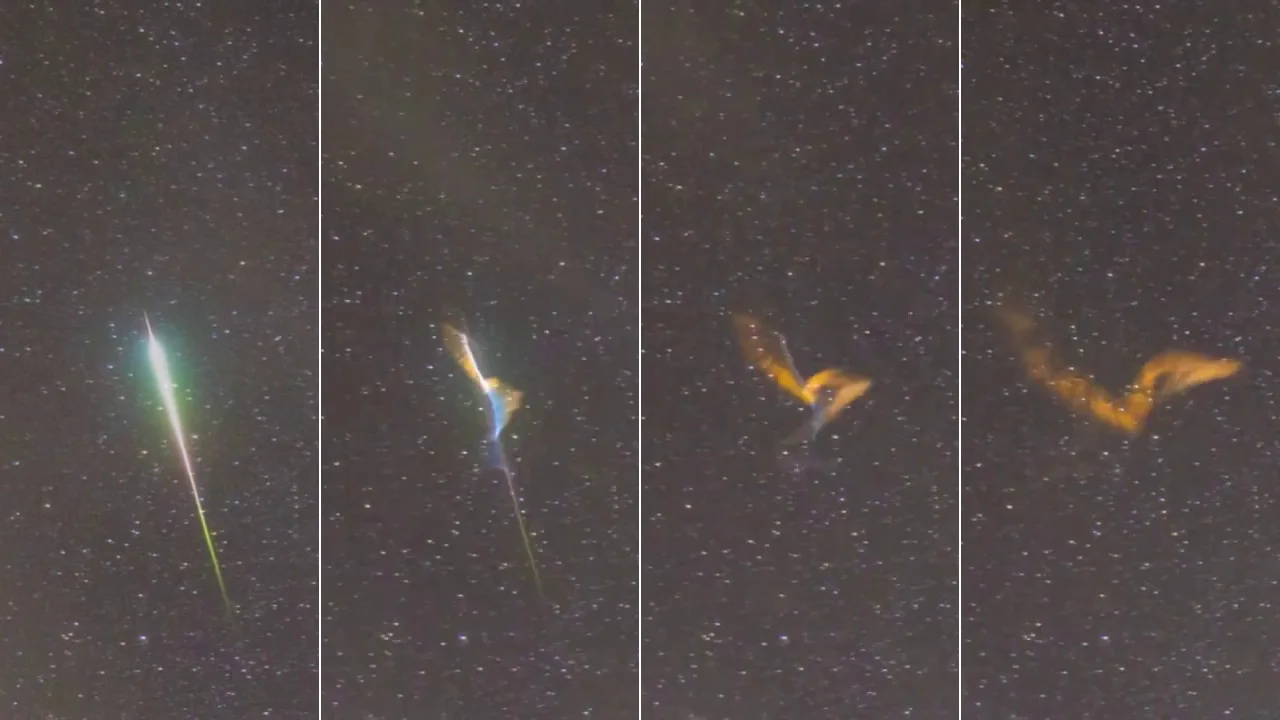
Four frames taken from a persistent train video, shot on October 21, 2022, show the initial Orionid meteor flash, and three views of the persistent train that developed in its wake. Credit: Brenda Tate/Tim Doucette/UGC
READ MORE: How to get the most out of meteor showers and other night sky events
Solstice
On June 20, at 4:51 p.m. EDT, the Sun will reach its highest point in our sky for the year.
This will mark the exact moment of the summer solstice and usher in astronomical summer for Canada and the rest of the northern hemisphere.






